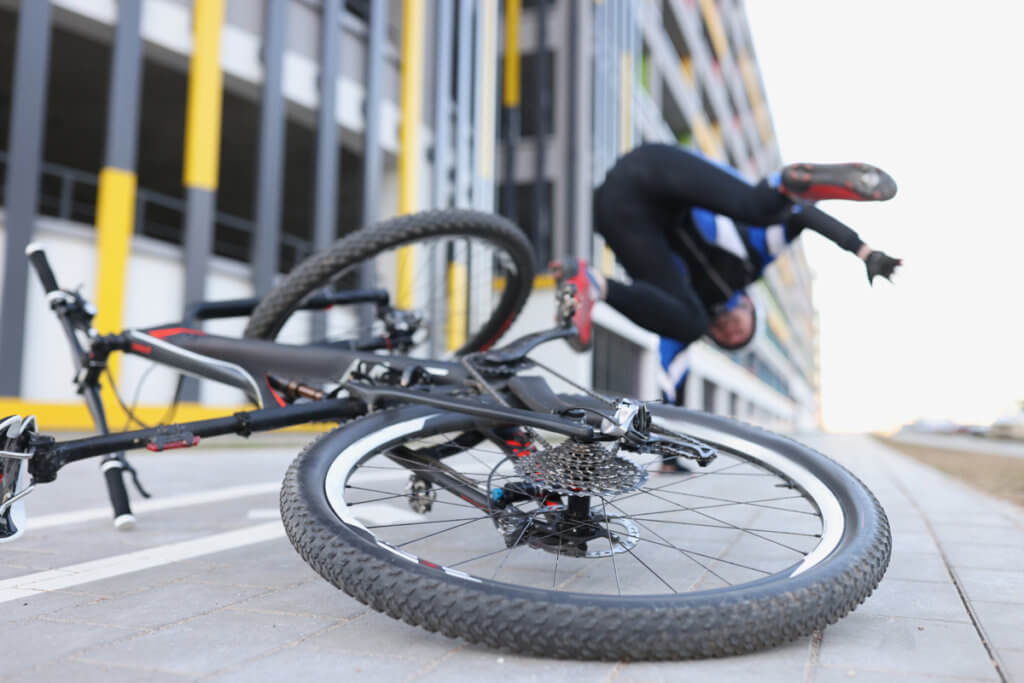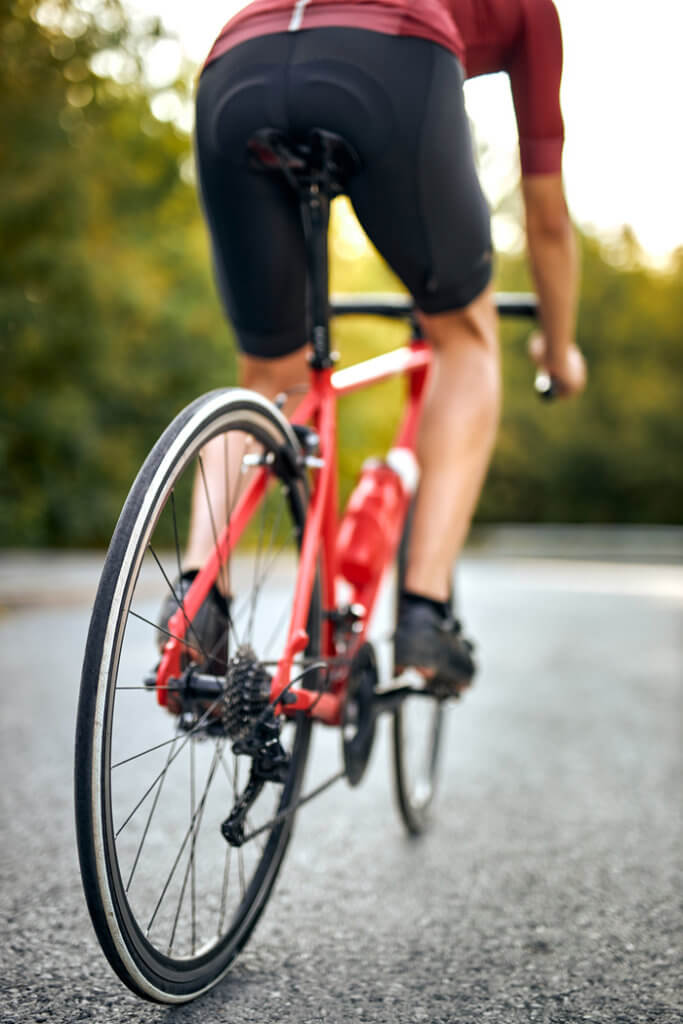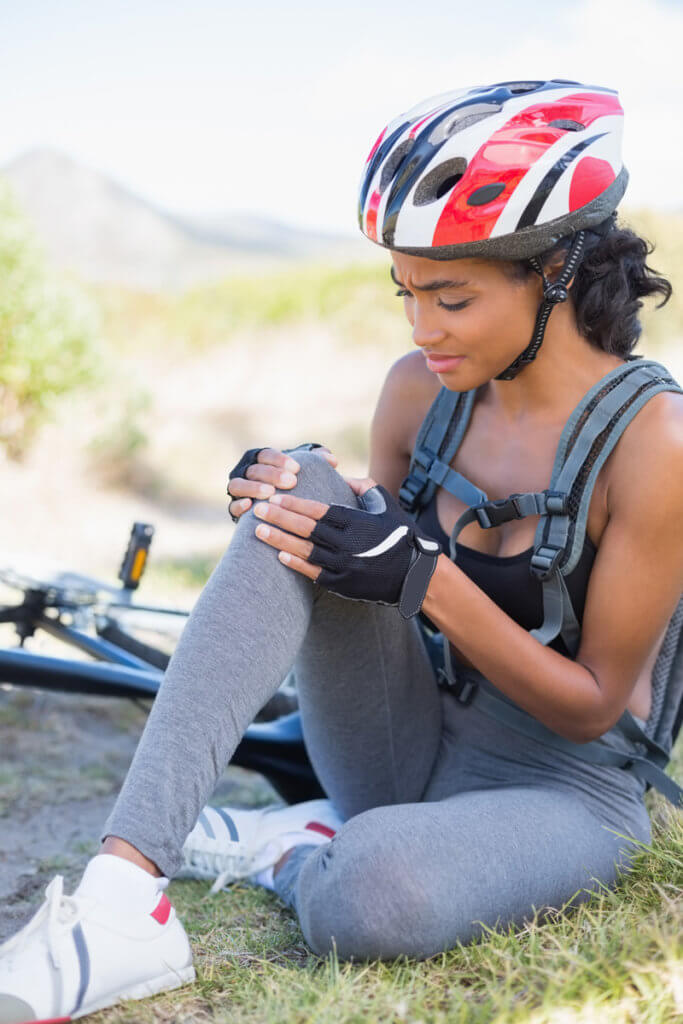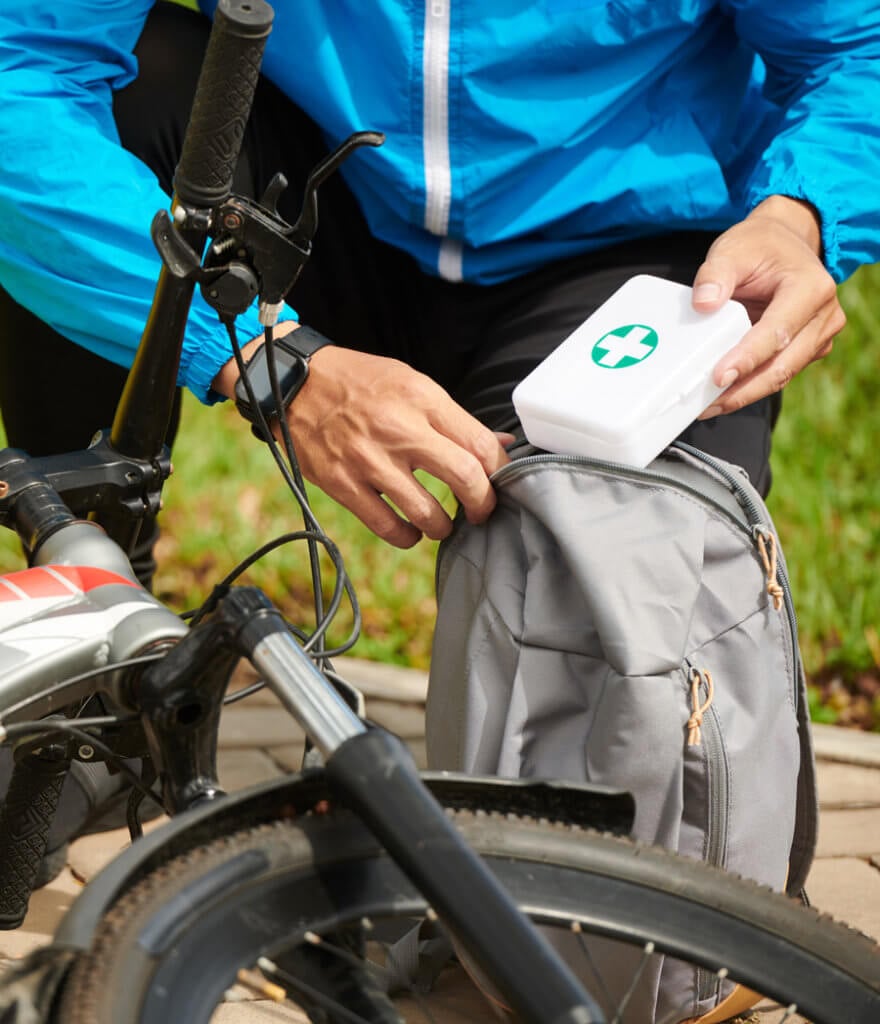While learning the cycling technique, you will one day come to such an essential topic as falling off a bike safely. The word “safe” looks quite strange here. Rather, the falling should minimize damage to both the cyclist and the transport. You should not be afraid since professional athletes and amateurs are taught how to land correctly in almost all sports. Namely, this list includes:
- skiers and skateboarders
- cyclists and gymnasts
- football and hockey players
Although you have a double task in the case of a bike crashing, it is important to adopt a correct body position and land in a relatively safe place. The second most significant task is to objectively assess your state after the fall from a bike. And only after that, you should start inspecting the vehicle. Let’s break down all the steps as detailed as possible in the right order.

How to Fall Off a Bike
A crash on a bicycle will not scare you much if you know an exact algorithm of actions. By following it, you can even try to regain control of the slide and prevent a bike fall. However, if you fail, follow the next steps to protect yourself from dire consequences.Don’t Be Afraid to Fall
When learning how to survive such an accident, the essential challenge you have to deal with is your emotions and, in particular, a sense of fear. You should keep it under control for a variety of reasons:- If you are consumed by fear, the body becomes strained and the muscles tense up. But for a proper bicycle fall, the elbows, on the contrary, should be unlocked and bent. The same applies to the knee nearest to the ground. You need to tuck it into the bike, but this will be difficult to do in a state of fear and with a stiff body.
- If you are afraid of crashing on a bike, your passion for cycling will not last long because you will be scared of getting on it again after the first serious incident.
Control the Slide
Wheel slide is a quite common cause of cyclist accidents. It tends to occur at road intersections at the time of making a turn. In this case, the road grip of the bicycle tire is weakened due to an increase in the braking force applied to the wheel. Therefore, try to release the brakes if you feel the wheel slide. This reduces the braking force and lets you regain needed traction. In the best-case scenario, these actions will prevent a crash on the bike.- Wheel slides can be prevented more efficiently when driving at a standard speed.
- If falling off a bicycle during a high-speed drive, the person faces more serious consequences. At the very least, the skin will be damaged because the body will move by inertia along the ground. A cyclist’s suit, as a rule, is quite thin, and it tears instantly.
- This does not mean you need to drive very slowly. The slower you drive, the more you swing, and the harder it is to maintain balance. It is better to choose an optimum speed based on your cycling skills.

Select a Safe Landing Spot
If you have a chance to turn the handlebar to the safest place to land, make an effort to do it:- The softer the landfall, the better. Grass, leaves, mud, sand, and wet earth are preferable landing spots.
- The worst place for a bicycle crash is concrete, stones, and a usual road surface.
- Since accidents of this kind often happen on motorways, it is critical to avoid being hit by passing traffic after a person falls off a bike. Always assess traffic conditions during a trip to understand where it is best to turn the handlebar.
Take the Correct Position
When a cyclist is contacting a surface, they need to take the correct position in order to minimize the risks:- The worst option is to flop down on the ground, as the possibility of receiving an injury is bigger in this case.
- Follow the hedgehog rule: when it senses danger, it curls into a ball, hiding the head inside.
- You should tuck yourself up as if you are about to roll. And just like with a somersault, the head should be pressed to the chest as close as possible. To do this, press the chin to the interclavicular hollow. The elbows and knees should also be bent and tucked up. At the same time, try to avoid toughening the limbs to prevent a fracture.
What to Do After Falling Off Your Bike
The crash cycle doesn’t end with landing on a surface, and a lot depends on the correct sequence of actions after it.Don’t Rush
In any stressful situation, the level of adrenaline in the blood rises sharply. Upon bicycle crashing, it may seem to a person who got into the accident that everything is absolutely fine. The increased adrenaline level prompts us to jump to the feet, hop up the crashed bicycle, and continue the ride. Under no circumstances should you do this!- In the beginning, it is important to completely refrain from moving and allow yourself to regain clear consciousness.
- However, trying to change your position, although only by crawling, is advisable if staying put is more dangerous than moving, for example, when falling on a bike happens in the middle of a roadway, and there is no one nearby. In such a case, some careless motorist can run into the lying cyclist on a high speed. It is also better to crawl away when the accident happens on a mountain slope and you need to avoid sliding down.
Stay Calm
The other extreme cyclists are prone to in the event of a road bike crash is panic. Such an emotional state also distorts their perception of reality, and it may seem to a person that he or she has received more bike crash injuries than they actually have. Therefore, regain control over your emotional state before you start doing anything.Check Yourself
Imagine you fell off a bike, got on your feet, and only then found out something is broken. To prevent complications and evaluate your physical condition correctly, follow the simple rule: check all parts of the body from small to large:- First, move the smallest parts of the limbs – fingers and toes.
- Then, gently bend your joints located higher – check if your knees and elbows work. If you discover any problems, it is better to stop at this stage and try to call someone for help.
- Check if you feel dizzy, have nausea, or experience other painful sensations.
- Start talking out loud, even to yourself, to make sure you are able to articulate your thoughts. This means that if there is a brain concussion, it is not that bad.

Call for Help (If You Need)
It is not a good idea to continue riding after a serious bike crash, even if you feel well.
- Firstly, the vehicle itself could be damaged.
- Secondly, when a person continues driving after a crash on a bicycle, he or she may feel sick during the ride and lose balance, leading to a new incident.
Therefore, it is best to go to the nearest place convenient for you on foot.
Call for help if you reveal something is wrong in the process of self-inspection. If no one is seen around, use your phone to call somebody who can come to you quickly. If the phone is broken and there is no one near you, look around to find the nearest place where people can help you.
Take Care of Your Wounds
So that a fall off a bicycle does not leave you wrong-footed, you should have a first-aid kit with at least a minimum set of necessary medicines. Treat and bandage open wounds with the utmost care or let others do it if help has already arrived.
Check Your Bike
Only upon completing all the above steps should you begin to carefully inspect your transport. The likelihood that the vehicle stays completely intact after serious falls on a bike is weak. However, it may remain undamaged if the accident happens at a low speed and you manage to regain relative control over it before landing. A bicycle should be diagnosed starting with those parts that break in the first place:
- Wheels with all their components: tires, spokes, rims
- Brakes, gearbox, and handlebar
If everything is intact, go to the saddle: check its level and possible dangling. The most unlikely damage, which nevertheless can occur, is frame cracking. If there are no cracks anywhere and all other parts of the bicycle are in working order, you can continue riding. But it is better not to do this until you are 100% sure you are not injured.
Always Be Prepared
A bike crash should not take a cyclist by surprise. Learning how to tuck yourself up when landing is important, but it’s not enough. There are also a few things you need to have with you on a long trip:- first aid kit
- water
- snacks in case you are stuck in a remote area where no one is around
- means of communication
- matches or a lighter to start a fire
- warm waterproof clothing
- everything you may need to quickly repair your vehicle: a universal wrench, spare tires, a cycle pump, and more.

And don’t forget about your friends. If you are not alone on the trip, the whole situation will resolve much faster and easier.
Conclusion
There can be many reasons for a bike misadventure, and the time available for reacting will vary. Sometimes a collision is so sudden that only conditioned reflexes can save the cyclist. The faster your response becomes automatic, the more chances you have to safely get out of the trouble. If you are lucky, you will even be able to restore balance and tire grip and prevent a bicycle crash in a critical situation.
Between the best and worst-case scenarios, a lot of options allow you to minimize harm to your body and vehicle. If you follow the instructions above, your fall experience will be relatively harmless. It will not prevent you from achieving success in cycling or just riding for fun on your favorite bicycle, the more so that now you know the answer to the question, What should I do if falling off my bike?
